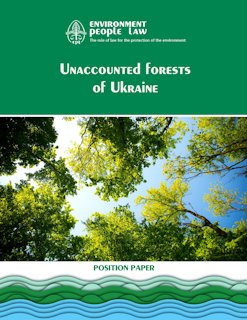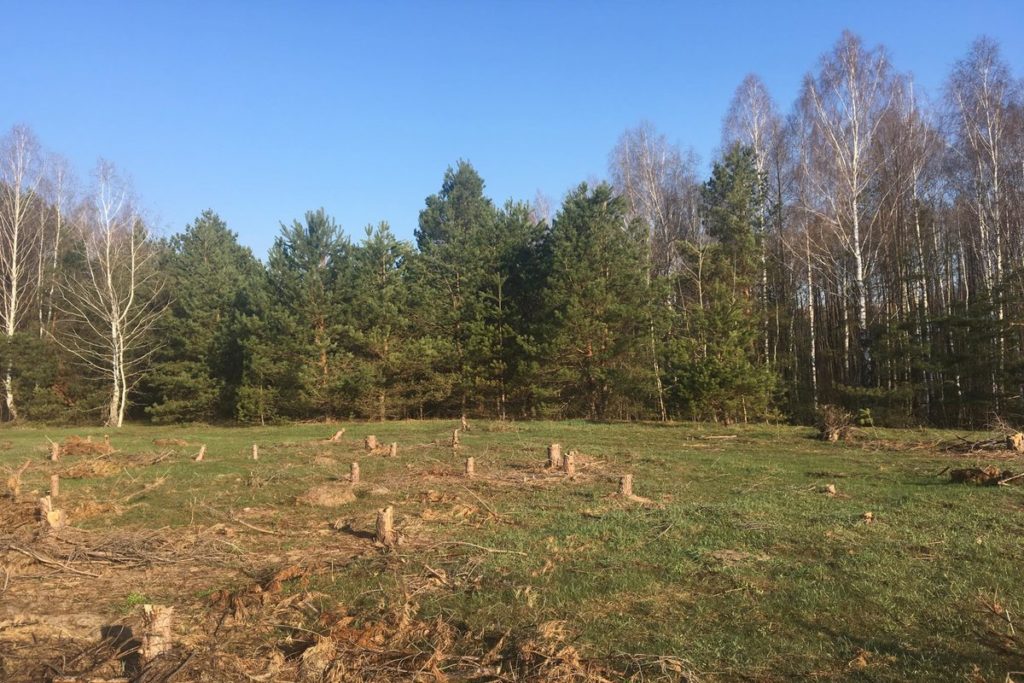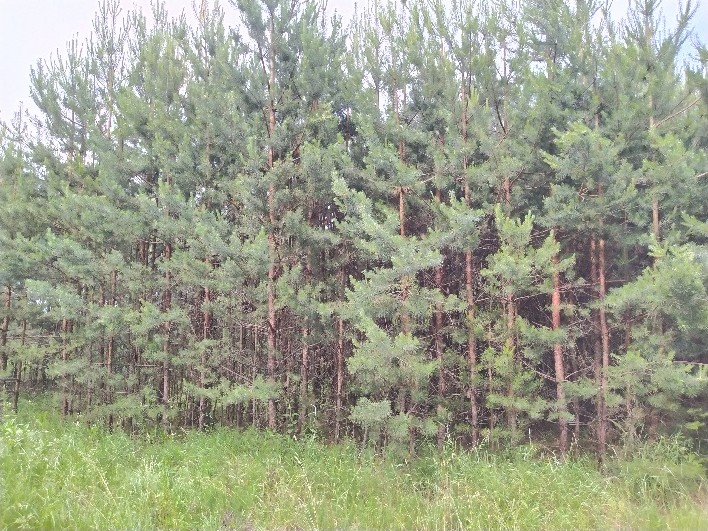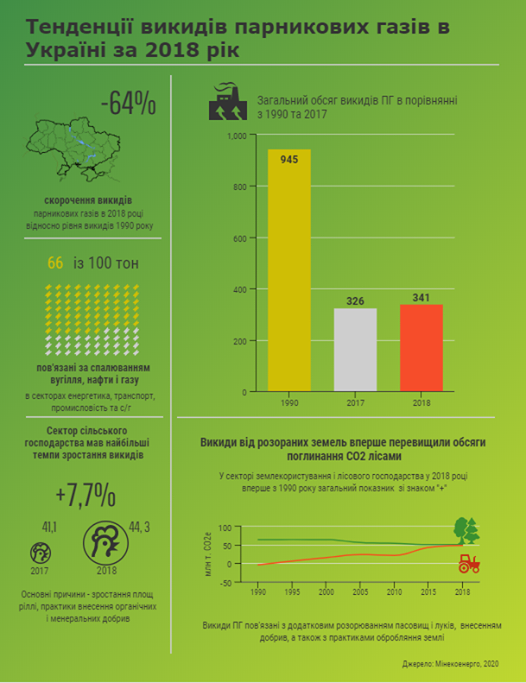In Ukraine, there is a large number of unaccounted forests on agricultural and undistributed lands. There is no exact data on the area of unaccounted forests, but some estimations indicate the scale of hundreds of thousands of hectares. Due to the intensification of agricultural production, unaccounted forests are being cut down on a massive scale, and the land is being returned to use as arable land. While EU countries spend significant resources on climate change combating and forest-supporting programs, the opposite is happening in Ukraine.
In order to solve the problem of self-seeding forests, it is necessary to transfer unaccounted forests to state (municipal) lands for permanent use of state (municipal) forestry enterprises. In addition, it would be reasonable for privately owned lands to start conducting private forestry according to a simplified procedure, compared to state and municipal forests.
This will not only preserve sustainable forests of natural origin, which do not require expenses for creation and maintenance, but also allow forest enterprises to profit from their use in the future.
The problem of unaccounted forests
In Ukraine, there is a large number of unaccounted forests on agricultural and undistributed lands. Unaccounted forests can be divided into two categories:
• forests on abandoned agricultural lands that were formed naturally (“self-seeding forests”);
• forests on lands that were provided to forest enterprises 10-15 years ago for afforestation. Plantations were created on such plots, but land documentation was not issued, and plots were not reflected in cartographic documents in forest inventory and planning. Consequently, these areas do not have the legal status of forest.
The situation after the collapse of the Soviet Union was the reason why self-seeding forests appeared. Significant number of fields on unproductive and degraded lands were withdrawn from rotation, abandoned and overgrown naturally (primarily in Polissya and the Carpathians, but also in the forest-steppe zone).
The area of self-seeding forests of Polissya and the Carpathians is significant, especially taking into consideration the inaccessibility of the territories and the general low productivity of soils. There is no exact data on the area of unaccounted forests, but some estimations indicate the scale of hundreds of thousands of hectares. For example, the Committee on Agrarian Policy and Land Relations of the Verkhovna Rada in 2018 estimated1 unaccounted forests at 500,000 hectares in Polissya; the regional inventories in Sumy and Ivano-Frankivsk oblasts estimated the area of self-seeding forests2 at 17,000 and 33,000 hectares, respectively. The exact calculation of naturally reforested agricultural lands is planned to be performed within the National Forest Inventory3.
A significant part of such forests is located on state-owned lands, where the land is usually managed by the State GeoCadastre. The rest are privately owned or municipally owned.
The area of another group of unaccounted forests – plantations created by forest enterprises on unregistered land plots – is not so significant, but, according to various expert opinions, in Ukraine it can reach several dozens of thousands of hectares.
Due to the intensification of agricultural production in Ukraine, unaccounted forests are being cut down on a massive scale, and the land is being returned to use as arable land.
Fig.1
Cut down for agricultural purposes and still existing self-seeding forest (Chernihiv oblast)4
Fig.2
Sold as an agricultural land and planned to be cleared self-seeding forest, Chernihiv oblast
Meanwhile, official data from the State Greenhouse Gas Inventory5 indicates that last year, for the first time since independence, emissions from agriculture exceeded the amount of carbon accumulated by forests. Further deforestation will only strengthen this trend.
Fig. 3
In 2018, emissions from plowed land for the first time exceeded the amount of CO2 accumulated by forests6
Instead, granting legal status to self-seeding forests will increase carbon sequestration, increase Ukraine’s forested area, and improve biodiversity conservation. In addition, it will save money, because if large sums need to be spent on the creation of new forests and their further care, self-seeding forests can continue to grow without human intervention and are more resistant than artificial ones. In the case of Polissya, reducing the level of plowing in the region7 can also reduce the risk of sandstorms.
Unaccounted forests on state and municipal land
The magority of unaccounted forests in Ukraine grows on state and municipal lands. However, during the land inventory, self-seeding forests mainly go under the category of “arable land” or “pasture”, and then, accordingly, are either provided for personal farming or put up for land auctions for commercial agricultural production. Also, land tenants of these “pastures” often change the type of land to “arable land” by ordering the development of corresponding land management projects.
The land management projects, which were analyzed by the authors of this paper8, put up for land auction indicated that the existence of self-seeding forests is not noticed or deliberately ignored9 by land managers, the State GeoCadastre, and local self-government bodies.
At the same time, the existing legislative mechanisms allow during the land inventory and land management to identify self-seeding forests as forests and not to transfer them to private ownership or lease as agricultural land.
Also, even if there is a desire by local authorities to transfer self-seeding forest to the permanent use of a forestry enterprise, there is a problem for this enterprise having to spend significant funds on land management plan development and compensation of losses of agricultural production, which can reach several million UAH. The last issue will be solved in July 2021, when the Law of Ukraine “On Amendments to Certain Legislative Acts of Ukraine on Land Use Planning”10 № 711-IX of 17.06.2020 will enter into force.
Unaccounted forests on private land
The rest of unaccounted forests grows on privately owned lands – shares, lands of personal peasant economy, etc. Due to the complicated bureaucratic mechanisms of forest management and land use change, the owners of such forests have no motivation to preserve these self-seeding forests and use them as forests, as they will be able to profit from that no earlier than a few decades, but the profit from arable land is almost immediate. In addition, the transfer of forest to the appropriate land status will require significant financial costs from a landowner.
Common problem for a number of post-Soviet states
According to the FAO11, in 2000-2010, forest areas on abandoned agricultural lands in Belarus, Kazakhstan, and Russia increased by 26 million hectares.
In Russia, as of 2016, about 100 million hectares of agricultural land, including about 40 million hectares of arable land, are abandoned12. About 76 million hectares out of these lands, according to Greenpeace Russia13, are suitable for forestry, and some of them are actually already forests. Russian legislation, similar to Ukrainian legislation, contains the concepts of “land categories” and “intended use”, but provides much greater sanctions than in Ukraine for “improper use of land”. As a result, owners of naturally afforested land often use the easiest way to get rid of trees in the area – arsons that regularly lead to forest and peat fires. Russia’s public environmental organizations had been for many years demanding from the government to address this issue by granting appropriate status to these self-seeding forests and simplifying the procedure for obtaining such status for private landowners. At the highest level, the Russian authorities recognized the problem only in 202014. In general, the situation is very similar to the Ukrainian one.
In the Baltic States, the situation is better due to the support of the EU and other legal systems. Owners of self-seeding forests are not forced to cut them down and return the land to agriculture, but on the contrary are encouraged by various government and European grants and programs to convert low-yielding agricultural lands into forests. In Latvia, the total area of naturally afforested agricultural land, according to estimations in 200815, was about 300 thousand hectares, with a wood stock of 4.8 million m3. In Estonia, the area of naturally forested abandoned farmland was 300-400 thousand hectares – according to FAO16. In Lithuania, in 2007-201317, the EU program provided financial support to individuals and legal entities – owners of abandoned (and not only) agricultural land – for afforestation, which gave positive results in increasing the country’s forest cover.
In general, afforestation of former agricultural land, which is being decommissioned due to urbanization or low productivity, is typical of many European countries18.
Legislative problems with unaccounted forests
The main legislative obstacles to the conservation of self-seeding forests are in particular:
• absence of definition of “self-seeding forest”;
• priority of agricultural lands in land legislation: lands suitable for agricultural needs should be provided primarily for agricultural use;
• complicated bureaucratic procedure for changing the purpose of land, which requires significant financial costs and time, even in the case of changing the purpose of state-owned lands to provide them for permanent use to a state forestry enterprise;
• Lack of simplified forestry regulations for private owners and, as a consequence, economic disadvantage for them to keep young unaccounted forests until they reach the age at which they will be available for industrial felling.
Political, economic, and managerial causes of the problem
The agrarian political lobby has been systematically working for many years to intensify agriculture and to simplify the procedure for land use in agriculture. Consequently:
• the State GeoCadastre sees its task in earning funds from land lease by state and local self-government bodies and considers as necessity to transfer as much available state-owned agricultural lands as possible for use as arable land;
• land managers openly falsify land management documents, defining real forest as arable land, and such documents receive all necessary approvals;
• the Verkhovna Rada of the last convocation passed the Law 2498-VІII19, which transferred the majority of undistributed agricultural lands from state to municipal ownership;
• the Verkhovna Rada of the current convocation registered and adopted in the first reading the Law № 219420, which simplifies the procedure of land relations as much as possible, in fact giving the “green light” to the maximum involvement of land in agricultural production;
• local governments are mostly interested in transferring all available municipal agricultural lands for use as arable land and in earning income from the lease of these lands and / or raising their ratings before the local elections;
• intentions to inventory and preserve self-seeding forests, which were periodically declared in government program documents, remained unfulfilled.
Meanwhile, for many years, the State Forest Resources Agency, although declaring the need to preserve unaccounted forests, but has not taken any systematic action to preserve them.
There are some positive examples of actions by authorities, but they are unsystematic and represent the initiatives of certain individuals in management positions. In particular:
• Deputies of the Committee on Ecopolitics of the Verkhovna Rada of Ukraine, in cooperation with the Ministry of Energy, submitted amendments to the draft law № 2194 developed jointly with World Bank experts, which would stop the transfer of valuable lands, including unaccounted forests, to municipal ownership status. At the time of preparing this paper, all these proposals were previously rejected by the deputies of the Agrarian Committee during the preparation of the draft law for the second reading, but the direction of the Ministry of Environment is working on their at least partial consideration;
• Sumy Oblast State Administration preserves self-seeding forests by creating protected areas on them. Due to this, up to 5,000 hectares of forests have been preserved within the region in recent years;
• In 2020, the Chernihiv Oblast State Administration is conducting an inventory of non-agricultural lands in the region21. In particular, it is planned to inventory about 3,000 hectares of forested areas. These territories are further planned to be classified as forestry lands or conserved lands by performing afforestation and transferring them to the forest fund;
• specific territorial authorities of the State GeoCadastre in conducting an inventory of state-owned lands set the task for land managers to identify unaccounted forests and transfer them for further permanent use to forestry enterprises.
Conclusions and recommendations
The situation with self-seeding and unaccounted forests in Ukraine clearly demonstrates the inadequacy of the state’s environmental policy at all levels. While EU countries spend significant resources on climate change combating and fund forest-building programs, the opposite is happening in Ukraine. Similar deforestation processes on the European continent are taking place only in Russia, but even the corrupt government of the aggressor country with a huge amount of forest resources has recognized the problem of deforestation at the highest level, and the Russian government is working on it.
Solution to the problems of self-seeding forests in Ukraine requires, first of all, the political will of the state leadership. Some issues related to unaccounted forests can be addressed within the current legal framework, and others can be limited by targeted legislative changes.
In order to do this, it is necessary to transfer unaccounted forests on state (municipal) lands for permanent use to state (municipal) forestry enterprises. In addition, it would be reasonable for privately owned lands to start conducting private forestry according to a simplified procedure, compared to state and municipal forests.
This will not only preserve sustainable forests of natural origin, which do not require expenses for creation and maintenance, but also allow forest enterprises to profit from their use in the future.
Steps that we propose to perform
To the Government:
1) to declare in the program of actions of the Government a clear position on preservation of unaccounted forests;
2) to conduct the national forest inventory as soon as possible;
3) to give instructions to oblast state administrations and the State GeoCadastre on the necessity of taking into consideration unaccounted forests when approving land management projects, transferring of land to municipal and private ownership, and defining of plots for land auctions;
4) to give instructions to the State Forest Resources Agency together with oblast state administrations to conduct an inventory of unaccounted forests in each oblast and to start the procedure of transferring them for permanent use to forestry enterprises;
5) to amend the Resolution of the Cabinet of Ministers “On Approval of the List of Activities Related to Environmental Protection Measures” 22 that would allow to finance measures on granting the status to unaccounted forests on lands of all forms of ownership at the expense of the Environmental Protection Fund.
To the Verkhovna Rada of Ukraine:
1) to develop and adopt a law on unaccounted forests, which will define the concept of “self-seeding forest” and integrate it into land legislation;
2) to develop and adopt a law on a simplified procedure of forestry for private owners in areas of self-seeding forests.
To oblast state administrations and oblast councils:
1) to conduct an inventory of unaccounted forests on non-agricultural lands in each oblast and to start the procedure of transferring them to permanent use by forestry enterprises;
2) to finance with the help of environmental funds the work on granting the status of protected areas to the most valuable areas of unaccounted forests and, after the adoption of the correspondent changes by the Cabinet of Ministers, also to finance with the help of environmental funds the work on granting the status of “forest” to other areas of unaccounted forests.
To local authorities:
1) to conduct an inventory of unaccounted forests within united territorial communities;
2) to initiate the procedure of transferring them for use to state or municipal forestry enterprises;
3) do not allow to put such plots up for land auction and to grant them to private ownership.
1 On the results of the offsite meeting on the issue: “Problems of forestry reforming” – 20.02.2018, http://lhnv.net/?p=1418
2 National forest inventory: how forest policy shapes public perception of forest use – 2018, https://www.apd-ukraine.de/images/2018/Wald/National_Forest_Inventory_print_ukr.pdf
3 State Forest Resources Agency of Ukraine: Forest inventory will be conducted in Ukraine – 23.06.2020, https://www.kmu.gov.ua/news/derzhlisagentstvo–v–ukrayini–bude–provedena–inventarizaciya–lisiv
4 Source of picture: the group of activists «Forest Lovers of Ukraine»
5 Draft National Inventory of Anthropogenic Emissions from Sources and Absorption of Greenhouse Gases in Ukraine for 1990-2018 (in English in accordance with the requirements of the Secretariat of the UN Framework Convention on Climate Change) for public review and comments and suggestions – 25.03.2020, https://menr.gov.ua/news/34928.html
6 Source of the Infographic: Ministry of Energy and Coal Industry of Ukraine
7 Sand storms, smog, and fires: what is the cause of environmental disasters in Ukraine – 22.04.2020, https://life.pravda.com.ua/society/2020/04/22/240687/
8How self-seeding forests of Chernihiv oblast are being destroyed? – 20.08.2020, http://epl.org.ua/announces/yak–znyshhuyutsya–samosijni–lisy–chernigivshhyny/
9 Why “blind” land managers do not notice self-seeding forests? – 22.05.2020, http://epl.org.ua/announces/chomu–slipi–zemlevporyadnyky–ne–pomichayut–samosijni–lisy/
10 Law of Ukraine “On Amendments to Certain Legislative Acts of Ukraine on Land Use Planning” № 711-IX of 17.06.2020 – https://zakon.rada.gov.ua/laws/show/711-20#Text
11 FAO. 2016. Condition of the World’s Forests 2016. Forests and Agriculture: Challenges and Opportunities for Land Use. Rome. https://www.uncclearn.org/sites/default/files/inventory/a–i5588r.pdf
12 Stray forests – 1.11.2018, https://greenpeace.ru/blogs/2018/11/01/lesa–besprizorniki/
13 Forests and forestry on agricultural land in Russia: the condition of affairs in 2020 – 10.03.2020, https://www.openforest.org.ua/134784/
14 Vladimir Putin allowed the forest to grow – 30.01.2020, https://www.kommersant.ru/doc/4235769
15 Naturally afforested agricultural lands in Latvia – Assessment of available timber resources and potential productivity – January 2008,
16 Forest and water management http://www.fao.org/3/ag147e/AG147E18.htm
17 Instead of barren lands – green forests (afforestation in Lithuania) – 2.11.2010, https://www.openforest.org.ua/7928/
18 Afforested farmland vs. forestland: Effects of bark stripping by Cervus elaphus and climate on production potential and structure of Picea abies forests – 15.08.2019, https://journals.plos.org/plosone/article?id=10.1371/journal.pone.0221082
19 Law of Ukraine “On Amendments to Certain Legislative Acts of Ukraine Concerning Solution of the Issue of Collective Land Ownership, Improvement of Land Use Rules in Agricultural Land, Prevention of Raids and Stimulation of Irrigation in Ukraine” № 2498-VII of July 10, 2018 https://zakon.rada.gov.ua/laws/show/2498-19#Text
20 Draft Law on Amendments to the Land Code of Ukraine and Other Legislative Acts on Improving the Management System and Deregulation in the Field of Land Relations № 2194 of October 1, 2019, http://w1.c1.rada.gov.ua/pls/zweb2/webproc4_2?pf3516=2194&skl=10
21 Chernihiv OSA saves self-seeding forests – 15.07.2020, http://cg.gov.ua/index.php?id=394936&tp=page
22 Resolution of the Cabinet of Ministers of Ukraine “On Approval of the List of Activities Related to Environmental Protection Measures” № 1147 of September 17, 1996 https://zakon.rada.gov.ua/laws/show/1147-96-%D0%BF#Text





